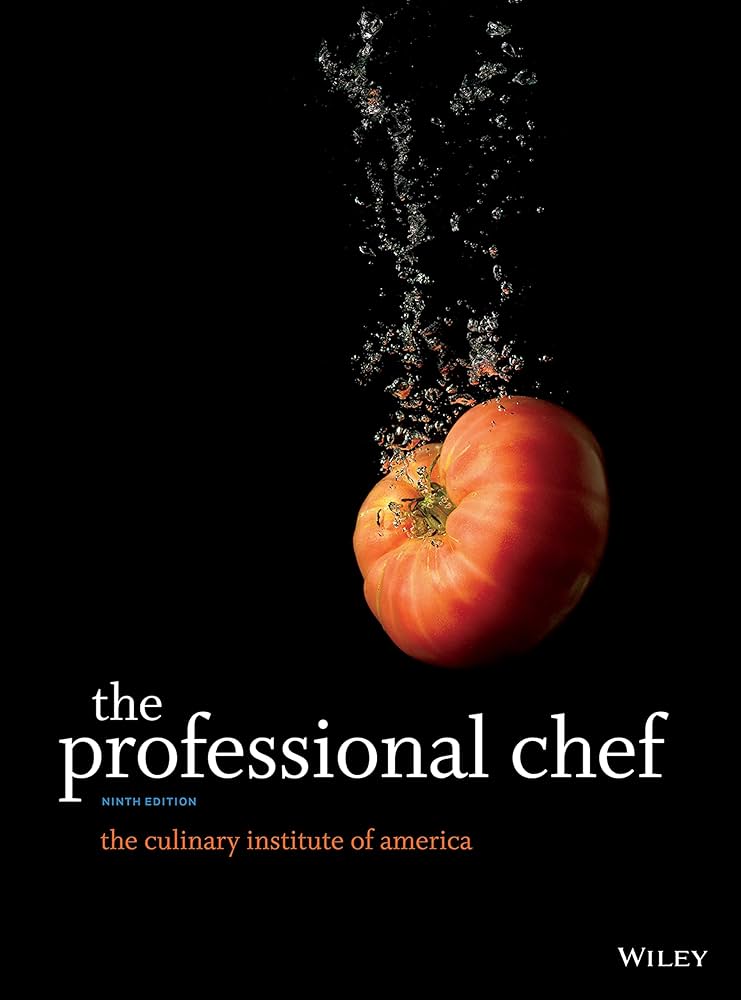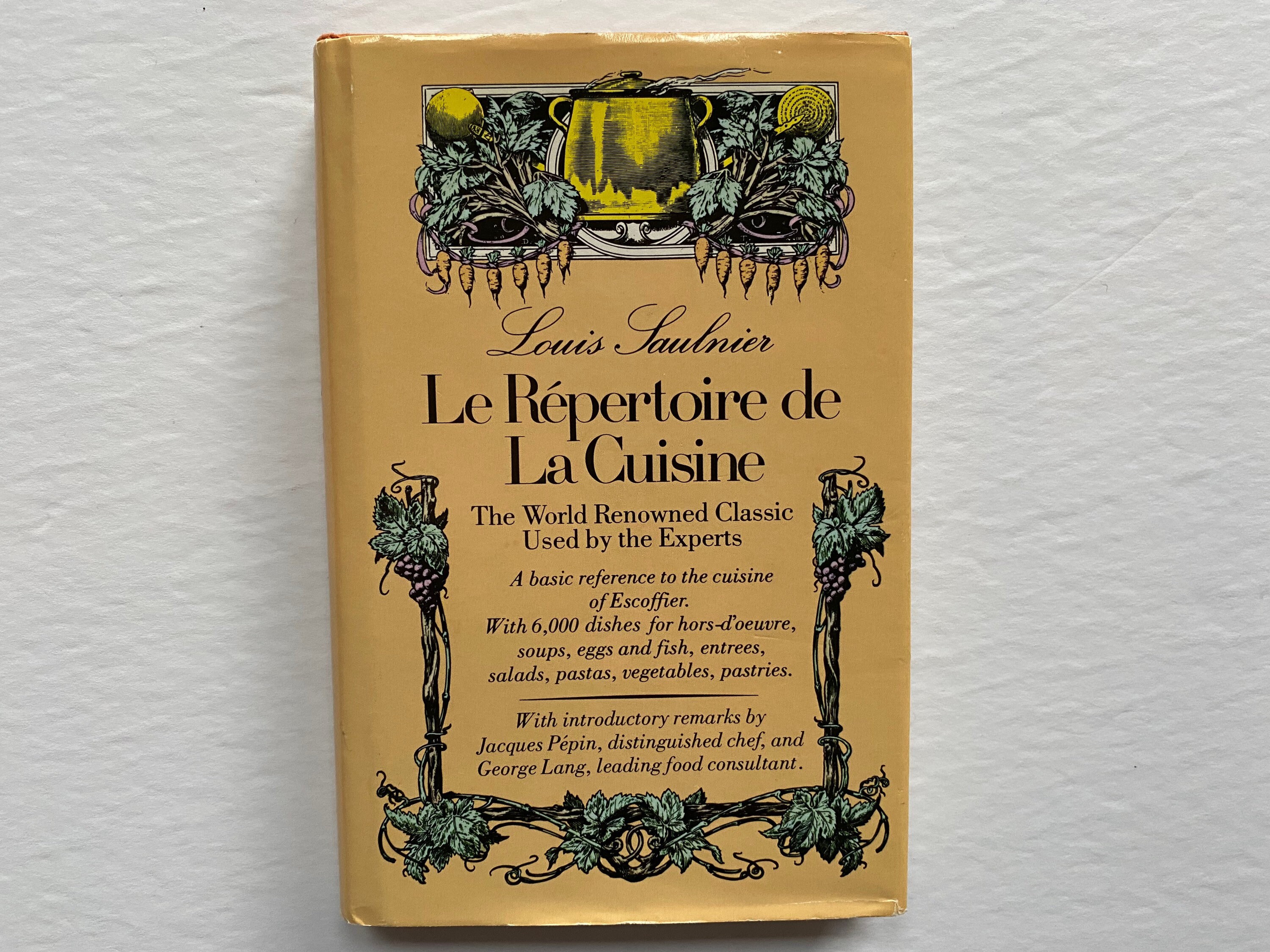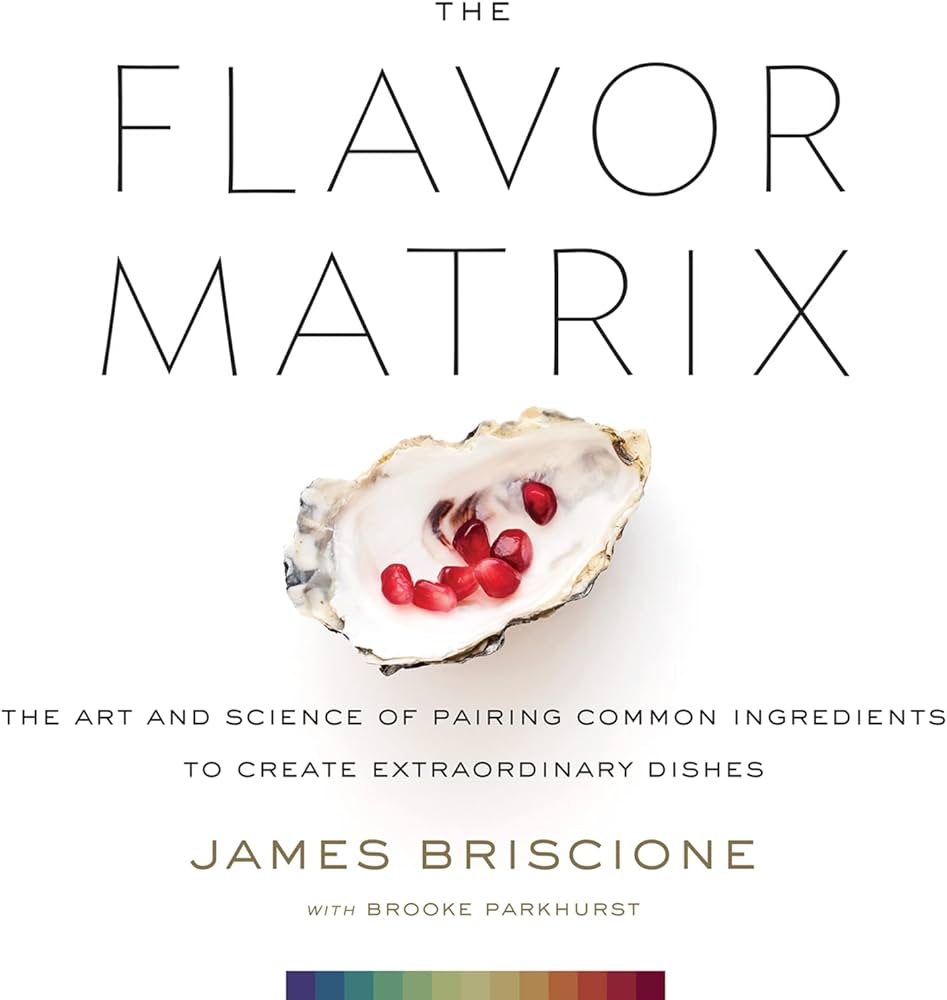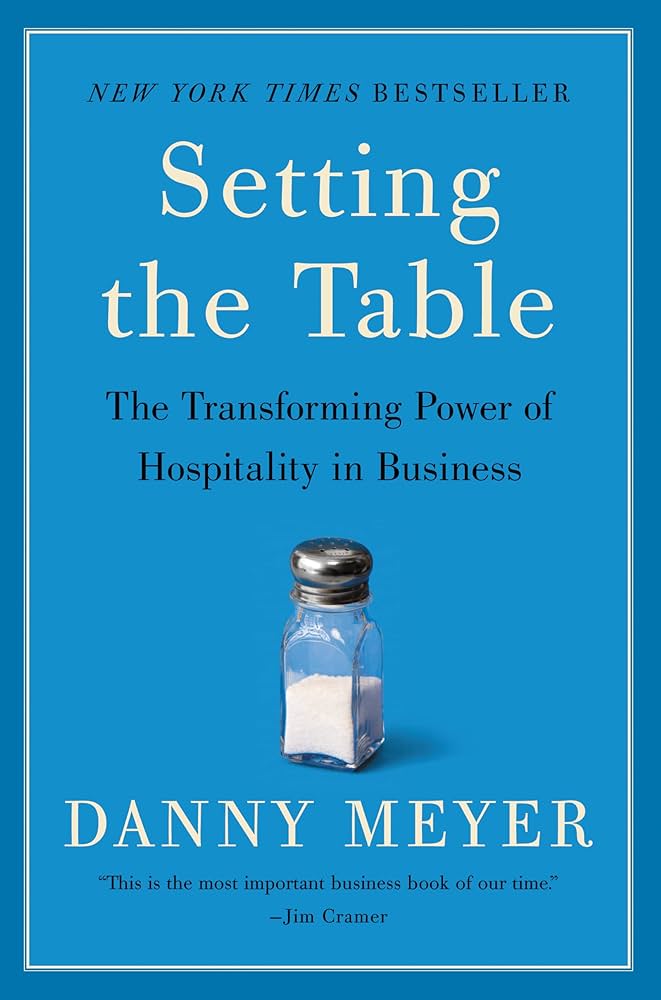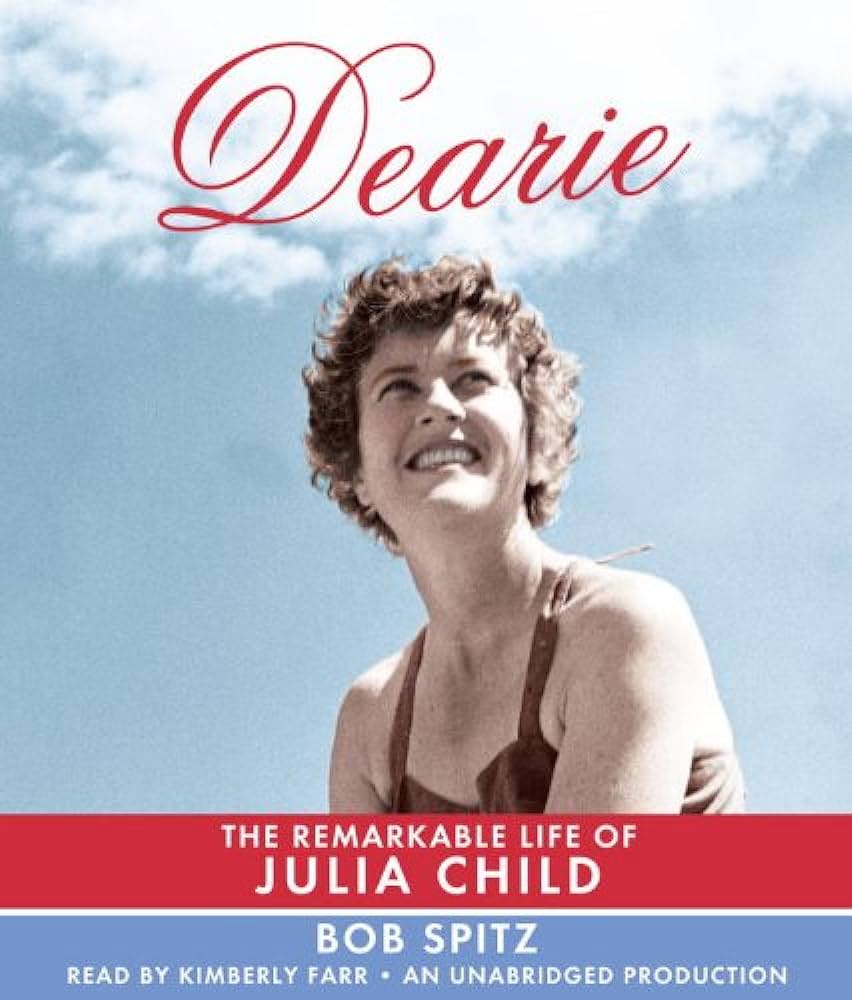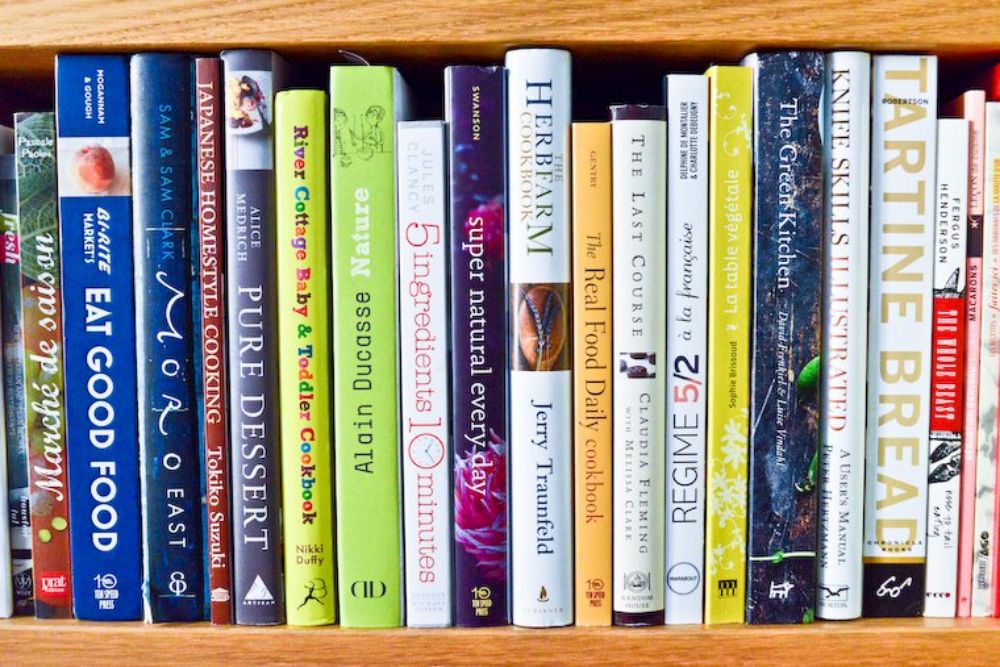
Introduction:
Books on culinary techniques, for instance, provide a foundation for both novice and experienced chefs to refine their skills. These volumes are typically comprehensive, covering everything from basic knife skills to advanced cooking methods. They not only teach the 'how' but often delve into the 'why,' offering scientific insights that explain the effects of heat on proteins, the role of fats in emulsions, and the chemistry of flavour combinations. Such knowledge empowers chefs to experiment with confidence and to troubleshoot with precision.
Beyond technique, chefs also turn to books for a deeper understanding of the culinary history that shapes our dining tables today. These texts are treasure troves of information, chronicling the evolution of cooking from ancient times to the modern day. They explore the origins of various cuisines, the societal influences that have shaped culinary trends, and the biographies of pioneering chefs who have left indelible marks on the food industry. This historical knowledge enriches a chef's perspective, enabling them to appreciate and preserve traditional practices while also finding ways to innovate respectfully and thoughtfully.
Furthermore, the realm of culinary literature also extends into management and leadership, which are crucial for chefs who aspire to run their own kitchens or establishments. Books on restaurant management, customer service, and business acumen are essential tools for any chef moving beyond the stove to take on the mantle of a restaurateur. These resources offer strategies on everything from managing supply chains and finances to leading a team effectively and crafting memorable guest experiences.
The diversity of the book selection available today reflects the myriad interests and needs of culinary professionals. Whether it's a meticulously detailed guide on artisanal bread making, a colorful anthology of street food around the world, or an introspective look at the philosophy of cooking, there is literature to satisfy every curiosity and requirement.
Thus, for chefs like Amanda Liu, who strive to remain at the forefront of culinary innovation and excellence, cultivating a personal library is not just an academic exercise—it is a strategic investment in their career and passion. It is an ongoing commitment to inspiration and mastery, a way to keep the creative juices flowing, and the kitchen buzzing with excitement and new ideas.
Section 1: Culinary Technique Masterclasses
Book 1:
The Professional Chef by The Culinary Institute of America
Buy Now On Amazon: Click Here
Overview: The Professional Chef, often hailed as the definitive textbook for culinary professionals, stands as a monumental resource in the library of any serious chef. Published by The Culinary Institute of America, a premier culinary school known for its rigorous approach to culinary education, this book serves not only as a textbook for students but as a comprehensive guide for seasoned chefs looking to deepen their understanding of culinary fundamentals.
Key Takeaways:
- Essential Techniques: From basic knife skills to advanced cooking methods like sous-vide and molecular gastronomy, The Professional Chef details techniques in a clear, step-by-step format, making complex concepts accessible. Each technique is accompanied by rich illustrations or photographs that guide the reader through the processes involved, ensuring clarity and comprehension.
- Ingredient Guides: Understanding ingredients is crucial for any chef, and this book provides extensive coverage on this front. It includes detailed profiles on a wide range of ingredients from common vegetables and meats to more exotic herbs and spices. Each profile discusses seasonal availability, flavor profiles, and appropriate culinary applications.
- Over 900 Recipes: The recipes serve as practical applications of the techniques covered in the book. They range from basic preparations to intricate dishes that challenge a chef's skill and creativity. These recipes are meticulously tested and come with expert tips on execution and presentation.
Why It's a Must-Have: The Professional Chef is considered the bible for culinary professionals for several reasons. First, its comprehensive nature makes it an invaluable reference that covers nearly every aspect of culinary arts. Whether a chef needs to brush up on a specific cooking method or plan a menu, this book has the necessary information.
Secondly, the credibility of The Culinary Institute of America as an authority in culinary education lends a level of trust and prestige to the content. The techniques and teachings are drawn from the experience and knowledge of numerous culinary experts and educators who are leaders in their field.
Moreover, the structure of the book supports both learning and practical application. It is organized in a way that follows a chef's growth from basic to advanced skills, making it a useful resource throughout a chef's career. Each chapter builds on the previous one, illustrating how techniques and ingredients can be combined to create complex cuisines.
The book also addresses modern culinary trends and the latest advancements in cooking technology, making it a relevant resource for contemporary culinary practice. It discusses not only the how but also the why, providing scientific insights into cooking processes which empower chefs to innovate and adapt with greater understanding.
Finally, the global approach of the book with recipes and techniques from around the world reflects the increasingly international scope of culinary arts. This global perspective prepares chefs to work in diverse culinary environments, enhancing their adaptability and broadening their culinary horizons.
In conclusion, The Professional Chef by The Culinary Institute of America is more than just a cookbook or a collection of techniques. It is a foundational pillar in the education of any chef. By integrating detailed theoretical knowledge with practical applications, it ensures that chefs are well-equipped to excel in the dynamic and demanding world of professional cooking. For Chef Amanda Liu, and many like her who are dedicated to the craft of cooking, this book is an essential guide that supports lifelong learning and mastery in the culinary arts.
Book 2:
Le Répertoire de la Cuisine by Louis Saulnier
Buy Now On Amazon: Click Here
Overview: Le Répertoire de la Cuisine, penned by Louis Saulnier and often associated with the legendary chef Auguste Escoffier, is a cornerstone of French culinary literature. This compact yet dense book is designed not as a recipe book in the traditional sense, but as a reference guide for the professional chef and serious culinary students who are expected to know, or quickly learn, the vast repertoire of French cuisine.
Key Takeaways:
- Introduction to French Culinary Terms: One of the most invaluable aspects of Le Répertoire de la Cuisine is its detailed lexicon of French culinary terms. This guide helps chefs decipher and master the complex language of French cuisine, which is essential not only for cooking but for thriving in any serious culinary environment that adheres to the standards of French cooking.
- Base Recipes: The book outlines numerous base recipes, or "mother sauces," foundational stocks, and classic French preparations. These are succinctly described, providing chefs with the fundamental building blocks from which countless variations and more intricate dishes can be developed.
Why It's a Must-Have: Le Répertoire de la Cuisine is considered an essential tool in the culinary world for several compelling reasons. First, its format as a concise compendium makes it incredibly useful for professional chefs who need quick, reliable answers in the heat of kitchen service. Unlike other cookbooks that may offer lengthy explanations or step-by-step guidance, Le Répertoire assumes a level of knowledge and competence, offering just the crucial information needed to execute a dish.
The book's approach to French cuisine is not merely instructional but deeply rooted in the tradition of teaching through brief, almost cryptic descriptions that challenge the chef to apply their prior knowledge and experience. This method encourages deeper learning and retention of information, as chefs must actively engage with the material and fill in the gaps through practice and further study.
Moreover, Saulnier's guide serves as a bridge connecting today's chefs with the historic and influential teachings of Auguste Escoffier, who revolutionized French cooking and restaurant management in the early 20th century. The principles and techniques outlined in the book have shaped much of what is considered standard practice in modern kitchens.
Additionally, the global influence of French cuisine makes understanding its fundamentals crucial for any chef looking to reach the upper echelons of the culinary profession. The precision, terminology, and techniques that Le Répertoire de la Cuisine imparts are applicable in various culinary settings, from haute cuisine to more casual bistro cooking.
The compact nature of the book also means that it can be a constant companion in the kitchen, easily referenced during service or planning. Its straightforward format is designed for quick consultation, helping chefs to avoid common mistakes and to ensure the authenticity and quality of their dishes.
In essence, Le Répertoire de la Cuisine by Louis Saulnier is much more than a collection of recipes; it is a rigorous exercise in the discipline of French culinary arts. For chefs like Amanda Liu, who value precision, heritage, and excellence in their culinary practice, Saulnier's work is not just useful; it is a testament to the enduring legacy of French cuisine and an indispensable guide in their culinary journey. This book not only educates but also connects chefs with a rich tradition, challenging them to refine their skills and deepen their understanding of one of the world's most esteemed culinary traditions.
Section 2: The Science of Food
Book 3:
On Food and Cooking: The Science and Lore of the Kitchen by Harold McGee
Buy Now On Amazon: Click Here
Overview: On Food and Cooking by Harold McGee is not just a book; it's an essential encyclopedia of food science for any chef or food enthusiast who seeks a deeper understanding of what happens when food meets heat, and beyond. First published in 1984 and meticulously updated since then, McGee's work is renowned for its thorough exploration of the intersection between food and science, making it a seminal text in the culinary world.
Key Takeaways:
- Insights into Food Chemistry: McGee offers detailed explanations of the chemical processes that occur during cooking. Understanding these processes helps chefs manipulate ingredients to achieve desired results more consistently.
- Science Behind Cooking Techniques: The book delves into the science behind various cooking methods, such as why searing meat at high temperatures creates a flavorful crust or how the temperature and time affect the texture of cooked eggs. This knowledge empowers chefs to refine their techniques based on scientific principles.
- Historical and Cultural Context: McGee also provides insights into the history and evolution of cooking, giving readers a broader cultural context for many traditional and modern cooking practices.
Why It's a Must-Have: On Food and Cooking is considered a must-have resource for several compelling reasons that resonate deeply with culinary professionals and enthusiasts alike. Firstly, it demystifies the kitchen by explaining the 'why' behind the 'how'. This understanding fosters a greater appreciation and mastery of cooking, allowing chefs to innovate and troubleshoot with confidence.
Harold McGee's approach is both scientific and accessible, making complex subjects understandable to those without a scientific background. He covers a vast array of topics, from the simple explanation of what makes bread rise to more complex discussions about meat chemistry and flavor development. This breadth of topics ensures that the book is not just for those with a passing interest in food science, but also for professional chefs like Amanda Liu, who must understand these principles to innovate and excel in their kitchens.
Additionally, the book's impact on the culinary industry has been profound; it has influenced countless chefs and food writers worldwide, encouraging a more thoughtful and analytical approach to cooking. Renowned chefs cite McGee's work as transformative in the way they cook and think about food. It bridges the gap between traditional culinary arts and scientific understanding, making it a pivotal resource for modern culinary education.
Moreover, On Food and Cooking does not merely provide recipes or formulas—it encourages continuous learning and curiosity about the food we eat and serve. It's the kind of book that a chef will return to time and again, each time extracting new information and insights as their culinary experience and knowledge grow.
In a professional setting, being equipped with the knowledge contained in McGee's book allows chefs to push the boundaries of traditional cooking and create more innovative, exciting, and refined dishes. Whether experimenting with new techniques, exploring new ingredients, or perfecting old recipes, understanding the science behind these efforts can lead to better outcomes and more consistent culinary success.
In conclusion, On Food and Cooking: The Science and Lore of the Kitchen by Harold McGee is an indispensable guide that supports a chef's journey towards culinary excellence. For chefs like Amanda Liu, who thrive on understanding and innovation, McGee's book is a treasure trove of knowledge that enhances their craft, enabling them to lead and inspire in the kitchen with science-backed confidence and creativity.
Book 4:
The Flavor Matrix by James Briscione
Buy Now On Amazon: Click Here
Overview: The Flavor Matrix by James Briscione, with its innovative approach to flavor pairing and the science behind it, represents a groundbreaking resource for chefs and culinary enthusiasts alike. Briscione, a renowned chef and culinary instructor, collaborates with flavor chemist Dr. Arielle Johnson to delve into the intricacies of why certain flavors work together, providing a scientific foundation to the art of cooking. This book is particularly significant for those in the culinary field who aspire to push the boundaries of traditional cooking and create novel and exciting dishes.
Key Takeaways:
- Science-Based Flavor Pairings: Utilizing data from IBM's cognitive computing system, Watson, Briscione offers a unique scientific approach to understanding which flavors pair well together. The book categorizes ingredients based on their chemical components and suggests pairing them to enhance their taste and aroma, which can transform ordinary dishes into extraordinary culinary experiences.
- Creative Recipe Ideas: Each section of the book introduces unexpected yet scientifically-backed pairings, followed by innovative recipes that demonstrate how these combinations can be incorporated into actual dishes. These recipes serve not just as guides but as inspiration for chefs to experiment with their own creations.
Why It's a Must-Have: The Flavor Matrix is a crucial tool for several reasons, making it a must-have in any chef's collection, especially for those like Amanda Liu, who are continually seeking to innovate within their culinary repertoire.
Firstly, the scientific approach to understanding flavor transforms the way chefs think about food. By grounding the concept of flavor pairing in chemistry, Briscione provides a logical framework that helps chefs understand why certain combinations work, going beyond traditional pairings and culinary intuition. This knowledge empowers chefs to experiment with confidence, knowing there is a scientific basis for their choices.
Moreover, the book is beautifully designed with colorful and clear infographics that make complex data easily digestible and visually appealing. These visual aids help chefs quickly grasp the relationships between different flavors, which is invaluable in a busy kitchen where time is of the essence.
The innovative nature of the flavor pairings suggested in The Flavor Matrix also makes it an indispensable resource for culinary creativity. For chefs aiming to stand out in a competitive industry, introducing unique and memorable flavor combinations can significantly elevate their dishes and dining experience. This book not only suggests these pairings but also encourages a more exploratory approach to cooking, challenging chefs to think outside the conventional culinary box.
Additionally, the book's approach is highly practical despite its scientific underpinnings. The inclusion of specific recipes and applications for each flavor pairing ensures that chefs can immediately apply what they learn to their cooking. This practical application is crucial for professional chefs who need to translate theory into tangible outcomes that can impress diners and critics alike.
In conclusion, The Flavor Matrix by James Briscione acts as both a reference guide and a source of inspiration, bridging the gap between scientific research and culinary application. For chefs, who thrive on innovation and are dedicated to pushing the boundaries of what is possible in the kitchen, this book provides the tools and inspiration necessary to explore new culinary landscapes. It encourages a thoughtful and inventive approach to cooking, making it a staple resource for anyone looking to create unique and experimental dishes that stand out in the modern culinary scene.
Section 3: Restaurant Management and Leadership
Book 5:
Setting the Table by Danny Meyer
Buy Now On Amazon: Click Here
Overview: Setting the Table by Danny Meyer delves into the core of hospitality, offering a masterclass in restaurant management from one of the industry's most successful practitioners. Meyer, a renowned restaurateur behind several New York City dining landmarks, shares his philosophy of "enlightened hospitality" which prioritizes not only customer satisfaction but also the well-being of every person connected to the business. This seminal work is revered for transforming how restaurateurs think about crafting memorable guest experiences and building a thriving restaurant culture.
Key Takeaways:
- Building a Customer-First Culture: Meyer emphasizes the importance of putting customers at the heart of every business decision. This approach extends beyond mere service to creating deep, meaningful connections with guests, anticipating their needs, and exceeding their expectations.
- Importance of Staff Empowerment and Care: Central to Meyer's philosophy is the treatment of staff as key stakeholders in the hospitality experience. He advocates for a supportive and inclusive work environment where employees are motivated and empowered to provide exceptional service.
- Business Acumen: Meyer also shares practical insights on managing and growing a restaurant business, from understanding financials to strategic decision-making, emphasizing the need for passion matched with strong business sensibilities.
Why It's a Must-Have: Setting the Table is an indispensable guide for chefs and restaurateurs at all levels, particularly for those like Amanda Liu who aspire to lead not just kitchens but entire dining establishments. The book's influence stems from several key contributions to the field of restaurant management.
Firstly, the concept of "enlightened hospitality" introduced by Meyer offers a revolutionary approach to customer service and staff management. This philosophy argues that caring genuinely for one's staff leads directly to better customer service, as happy employees are naturally inclined to make customers happy. This holistic approach has reshaped modern hospitality strategies, making Meyer's insights crucial for any restaurateur looking to build a loyal customer base and a positive workplace.
Moreover, Meyer's narrative combines personal anecdotes with hard-earned industry insights, making Setting the Table not only educational but also engaging and relatable. His stories provide real-world applications of his theories, offering a blueprint for others to adapt and implement in their unique contexts. This practical guidance is invaluable for emerging and established leaders in the highly competitive and often tumultuous restaurant industry.
The book also addresses the broader implications of running a successful hospitality business, including community engagement, brand building, and crisis management. Meyer's experiences with navigating the challenges of the 9/11 tragedy and its impact on New York City's restaurant scene, for example, offer lessons on resilience and the importance of community support in times of crisis.
Furthermore, Setting the Table goes beyond mere operational management to touch on leadership philosophy and personal growth, encouraging restaurateurs to cultivate their own leadership styles and to foster leadership in others. This focus on continuous personal and professional development is especially pertinent in the hospitality industry, where evolving consumer preferences and market dynamics require adaptive leadership.
In conclusion, Setting the Table by Danny Meyer is more than just a management book; it is a manifesto on how to cultivate a culture of hospitality that values kindness and optimism, alongside business acumen. For food professionals, who seek to elevate their establishments by creating unforgettable dining experiences and nurturing a positive team environment, Danny Meyer's book provides the wisdom and inspiration necessary to lead with confidence and creativity in the modern culinary landscape.
Book 6: Kitchen Confidential by Anthony Bourdain
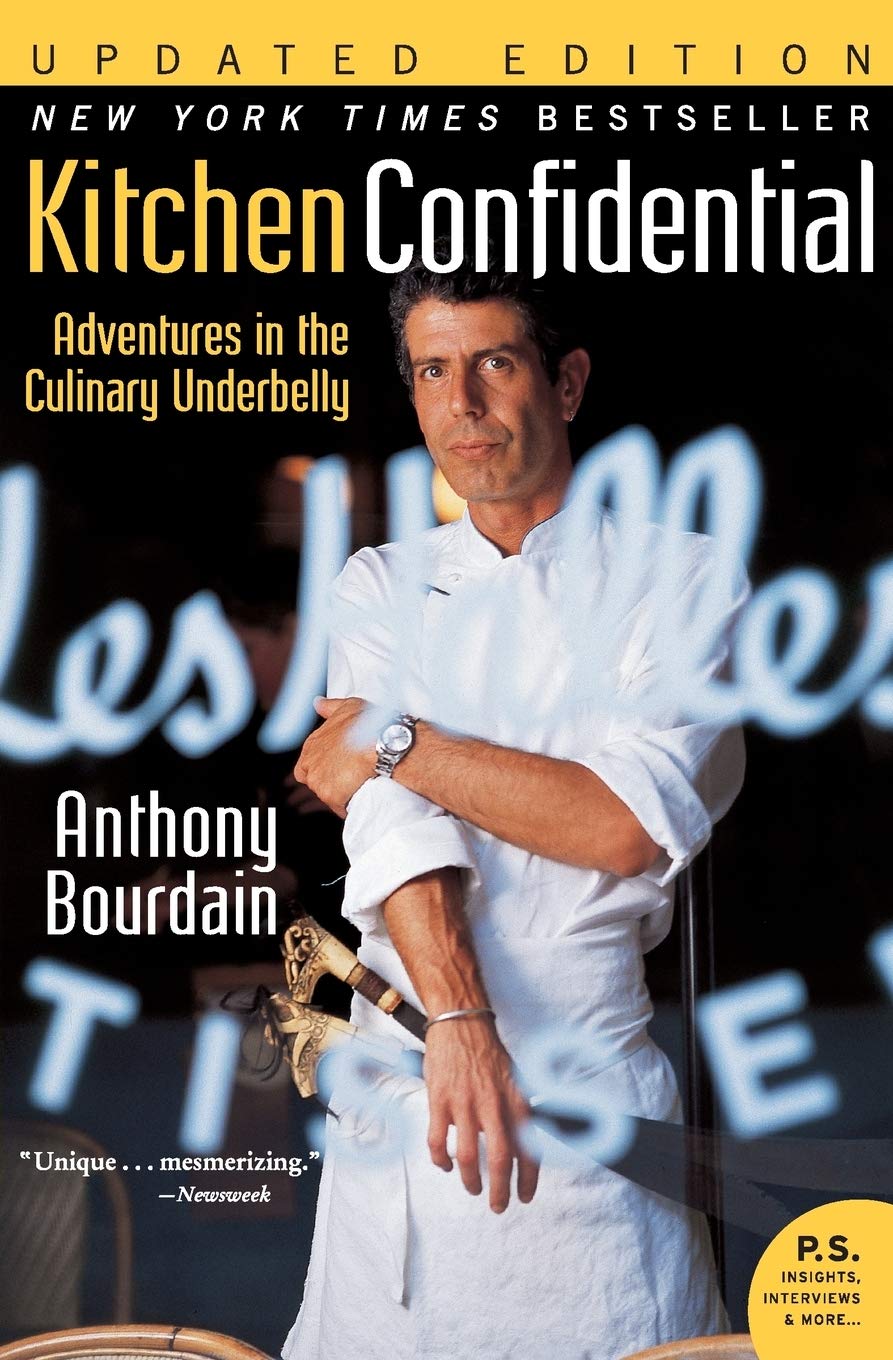
Buy Now On Amazon: Click Here
Overview: Kitchen Confidential: Adventures in the Culinary Underbelly by Anthony Bourdain offers an unvarnished look at the restaurant world through the eyes of one of its most charismatic and influential figures. Originally published in 2000, this book has become a definitive resource for anyone intrigued by what happens behind the scenes in kitchens. Bourdain, with his distinctive voice and sharp wit, narrates his journey through the gritty, high-stress, and often chaotic environment that defines many professional kitchens.
Key Takeaways:
- Real-World Advice and Experiences: Bourdain shares invaluable lessons gleaned from his years on the culinary front lines, including practical tips on kitchen tools, dealing with suppliers, and navigating the complexities of kitchen politics.
- Candid and Raw Narratives: His stories are compelling and honest, revealing the harsh realities of the culinary industry. Bourdain discusses everything from drug addiction and the cutthroat nature of kitchen culture to the exhilarating highs of culinary creativity and success.
- Cultural Insights and Culinary Exploration: Beyond personal anecdotes, Bourdain explores the broader cultural implications of food, its preparation, and its consumption, offering a deep appreciation for global culinary traditions and innovations.
Why It's a Must-Have: Kitchen Confidential is considered essential reading for several compelling reasons, particularly for culinary professionals like Amanda Liu, who are navigating the complex and demanding world of restaurant kitchens.
First, Bourdain's transparent approach to discussing his experiences provides a rare insight into the industry's inner workings. This transparency helps demystify aspects of the culinary profession that are often romanticized, offering a more grounded perspective. For chefs and restaurateurs, understanding these realities is crucial for preparing for and thriving in a demanding career.
Moreover, Bourdain's narrative style—intimate, engaging, and often humorous—makes Kitchen Confidential not only an informative read but also a highly entertaining one. His ability to convey deep truths through personal stories makes the lessons more relatable and impactful. This storytelling prowess is instrumental in communicating the passion, intensity, and dedication required to succeed in the culinary arts.
Additionally, the book offers a look at the importance of resilience and adaptability, qualities essential for anyone in the hospitality industry. Bourdain's experiences highlight how overcoming challenges and embracing change are part of the daily life of a chef and restaurateur. This aspect of the book is particularly inspiring for professionals facing their own hurdles in the kitchen.
The cultural exploration in Kitchen Confidential also enriches the reader's understanding of global culinary traditions, promoting a broader appreciation of how different cultures approach food preparation and dining. For chefs, this global perspective can inspire innovative menu development and foster a greater appreciation for diverse culinary practices.
In essence, Kitchen Confidential by Anthony Bourdain is much more than a memoir or a collection of kitchen tales. It is a guidebook that offers life lessons both in and out of the kitchen. It encourages culinary professionals to pursue their passions with eyes wide open to the realities of the industry. For chefs, who are committed to making their mark in the culinary world, Bourdain's book provides the candid wisdom, encouragement, and inspiration necessary to navigate their careers with authenticity and resilience.
Section 4: Biographies and Histories
Book 7: Dearie: The Remarkable Life of Julia Child by Bob Spitz
Buy Now On Amazon: Click Here
Overview: Dearie: The Remarkable Life of Julia Child unfolds the captivating story of Julia Child, who transformed from a casual home cook into a culinary legend. This biography, penned by Bob Spitz, delves deep into Julia's life, revealing her late start in the culinary world and her unwavering passion for French cuisine that led to a revolution in American kitchens. The book provides a comprehensive look at her life, from her upbringing in Pasadena, California, to her days in the OSS during World War II, and her seminal years in France where she fell in love with cooking.
Key Takeaways:
- Julia's Journey: Spitz meticulously traces Julia Child's transformative journey in the culinary world, starting in her mid-thirties when she attended the famous Le Cordon Bleu cooking school in Paris. Her evolution from an amateur cook to a celebrated chef highlights the power of passion and lifelong learning.
- Impact on Culinary Arts: Julia's role in demystifying French cuisine for the American public through her cookbook Mastering the Art of French Cooking and her television show The French Chef is thoroughly explored. Her approachable techniques and charismatic on-screen presence made sophisticated recipes accessible to millions of home cooks.
- Personal Challenges and Triumphs: The biography does not shy away from the challenges Julia faced, including the sexism in the professional kitchen, the initial rejections of her cookbook manuscript, and her struggles with her health and personal life. Her perseverance through these hurdles provides a compelling narrative of resilience.
Why It's a Must-Have: Dearie: The Remarkable Life of Julia Child is a must-have for several reasons, making it a cherished addition to any culinary enthusiast's or professional chef's library, like that of Amanda Liu.
First, Julia Child's story is immensely motivational. Her late entry into the culinary field is a testament to the idea that it's never too late to follow one's passion. This message resonates deeply in the culinary industry, where career changes are common, and the path to success can vary significantly. For aspiring chefs and seasoned professionals alike, Julia's story reinforces the value of persistence, passion, and lifelong learning.
Moreover, the book offers insightful commentary on the evolution of culinary arts in the 20th century, particularly how television and media have transformed the way food is discussed and prepared in homes. Julia Child was not just a chef; she was a pioneer in food television, making this biography an important historical document that captures a pivotal moment in the cultural history of cooking.
Bob Spitz's engaging narrative style brings Julia Child's personality to life, filled with her humor, warmth, and exuberant love for food. This makes Dearie not just an informative read but also a delightful and inspiring one. Readers gain a personal look at Julia's character, which is as integral to her impact as her culinary skills.
The book also provides valuable lessons on overcoming adversity and making a lasting impact. Julia's challenges in a male-dominated industry and her relentless drive to teach and inspire home cooks mirror the hurdles faced by many in the culinary field today. Her success story encourages current professionals to strive for excellence and innovation while being true to their unique styles and visions.
Furthermore, Dearie illustrates the significant impact of passion and perseverance in achieving success. Julia Child's enthusiasm for French cuisine and her dedication to teaching were key to her profound influence on American cooking. This story serves as a reminder to culinary professionals that they can shape the culinary landscape and public perceptions through dedication and enthusiasm for their craft.
In conclusion, Dearie: The Remarkable Life of Julia Child by Bob Spitz is more than a biography—it's a source of inspiration, a historical account of culinary transformation, and a guide to personal and professional perseverance. For chefs like Amanda Liu, who are carving their own paths in the culinary world, Julia Child's life story provides not only motivation but also a roadmap for using one's passion to overcome obstacles and make an indelible mark on the culinary world.
Conclusion: Essential Books for Culinary Inspiration and Professional Growth
The world of culinary arts is not merely confined to the boundaries of the kitchen; it is a constantly evolving landscape of creativity, innovation, and tradition. For chefs at all levels, from the aspiring novices to seasoned professionals like Chef Amanda Liu, the journey toward mastery is continuous and demanding. It is a journey that requires not only practical skills and creativity but also a deep understanding of the traditions, sciences, and philosophies that underpin the culinary arts. The books we've explored in this blog—ranging from detailed technical manuals to inspiring biographies—serve as invaluable resources in this endeavor. They offer more than recipes and techniques; they provide a foundation of knowledge that can profoundly influence a chef's approach and success in the culinary world.
Each of these books brings its own unique value to a chef's personal and professional development. From mastering the complexities of French cuisine with Le Répertoire de la Cuisine to delving into the scientific underpinnings of flavor with The Flavor Matrix, these texts offer a comprehensive look at the diverse aspects of culinary expertise. They teach, challenge, and inspire, pushing chefs to refine their techniques and expand their culinary horizons. Likewise, managerial insights from Setting the Table and candid, behind-the-scenes stories from Kitchen Confidential provide the wisdom and reality checks needed to navigate the culinary industry's often tumultuous waters.
Moreover, the historical and biographical context found in works like Dearie: The Remarkable Life of Julia Child not only educates but also motivates. It illustrates the impact of passion and perseverance, showing that culinary greatness is often a result of personal resilience and continuous learning. These books are not just tools for technical refinement; they are beacons of inspiration that encourage chefs to pursue their passions with dedication and joy.
Considering these books as investments in your culinary journey is to recognize the immense value of knowledge and inspiration in achieving professional excellence and personal fulfillment. They are resources that can answer questions you haven't yet thought to ask and guide you through challenges you haven't yet faced. In this sense, building a personal library of these essential texts is akin to equipping a kitchen with the best tools—it is fundamentally about setting yourself up for success.
We encourage all our readers, whether you are just starting out in your culinary career or are looking to deepen your existing expertise, to view these books as milestones in your culinary journey. They are stepping stones to greater confidence, creativity, and competence in the kitchen and beyond.
As we conclude our exploration of these transformative books, we invite you to share your own experiences and recommendations. Are there other titles that have been pivotal in your culinary education or professional development? What books would you add to this foundational library? Your insights and suggestions are invaluable, helping to enrich the culinary community with diverse perspectives and collective wisdom.
Join the conversation by leaving a comment below and subscribe to our blog for more culinary insights, tips, and resources. Together, let's continue to inspire and support each other in our shared passion for the culinary arts.

